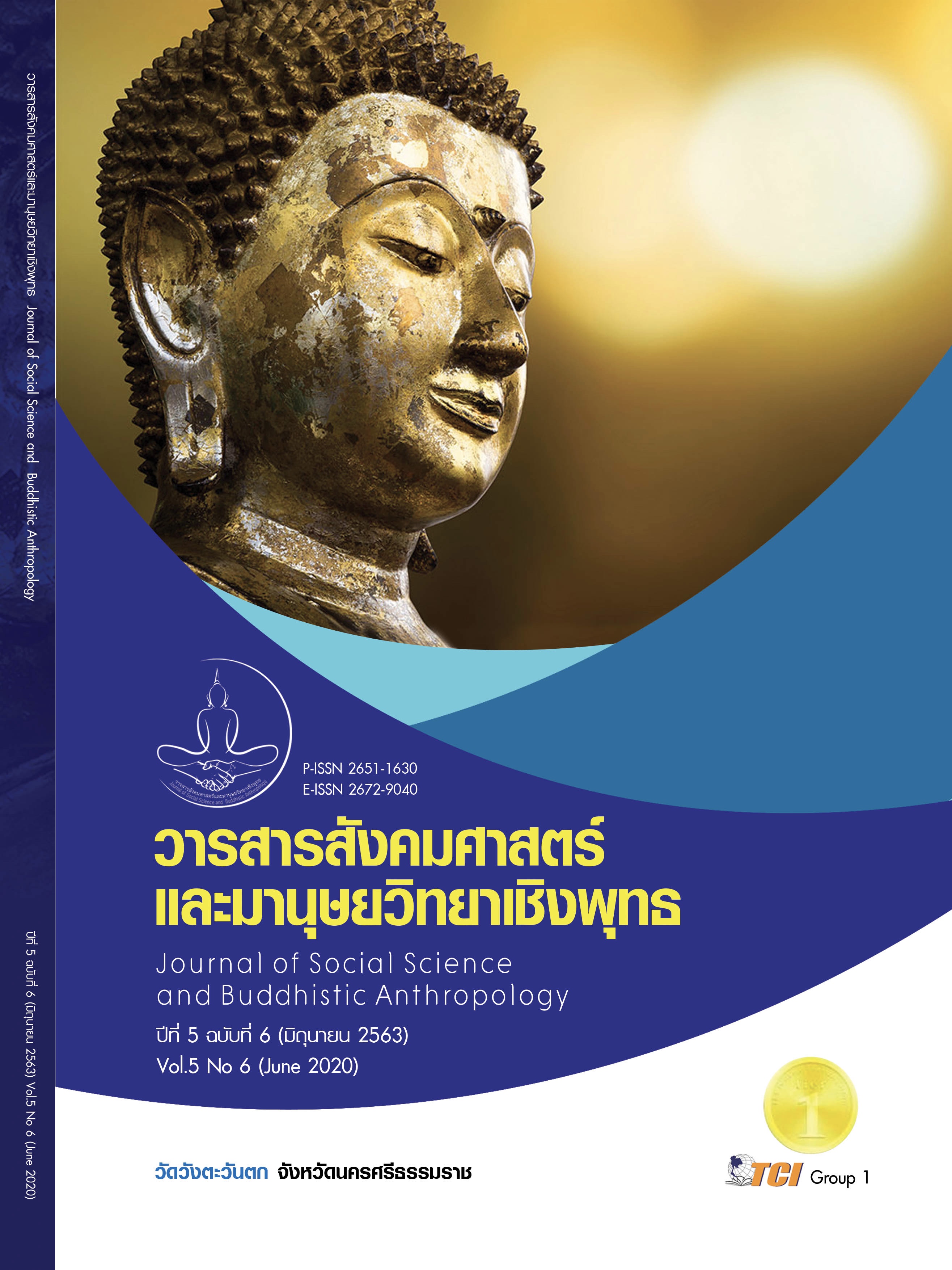IMPACT OF ECONOMIC AREA DEVELOPMENT UNDER THE SPECIAL ECONOMIC ZONE STRATEGY MUKDAHAN PROVINCE
Keywords:
Impact, Development, Special Economic ZoneAbstract
This article on the impact of economic area development under the special economic zone strategy, Mukdahan Province. The objective is to study factors affecting, the problems and obstacles affecting and the solutions and suggestions for This article had the impact of economic areas development under the special economic zone strategy, Mukdahan Province. By using qualitative research with document research, focus group discussion and in-depth interviews. Key informant which is the stakeholders that represent the sectors related to the Special Economic Zone Strategy, Mukdahan Province That is the policy formulation. Policy leaders from the government and private sectors of 20 people. The tools used to collect data is a semi-structured interview. With data checking in a triangulation. The result of the research shows that the factors affecting the development of economic areas under the special economic zone strategy Mukdahan Province consists of 1) factors for driving the target businesses 2) paradigm change factors. 3) benefits factors 4) management factors for organizations 5) factors for pushing the area development under the special economic zone strategy 6) Local operator factors and 7) Production factors. Problems and obstacles affecting the development of economic areas under the special economic zones strategy are 1) the status of the Office of the Prime Minister's Regulations on special economic zones, 2013, which has lower rank than other relevant laws, 2) incentives benefits, and 3) The locations is far from the main export door of Thailand. The solutions and recommendations as follows: 1) There should be an integrated development center for entrepreneurs and service centers. 2) To study the successful examples from foreign countries and neighboring countries and 3) should promote industries and businesses that rely on advanced technology to produce products with higher value added.
References
พรพิมล ปลั่งศรีสกุล และคณะ. (2560). การนำนโยบายด้านแรงงานไปปฏิบัติในการเข้าสู่ประชาคมเศรษฐกิจ อาเซียนของประเทศไทย. วารสารการบริหารปกครอง, 6(2), 284 - 304.
ไพศาล แสงจันทร์. (2558). องค์ประกอบทางด้านกายภาพและการใช้ประโยชน์ที่ดินเพื่อรองรับการพัฒนาเขต เศรษฐกิจพิเศษ กรณีศึกษาจังหวัดมุกดาหาร. ใน เอกสารการประชุมวิชาการด้านการวางแผนภาคและเมือง ประจำปี 2558. มหาวิทยาลัยธรรมศาสตร์.
สมพงษ์ ศิริโสภณศิลป์ และคณะ. (2562). รายงานฉบับสมบูรณ์โครงการจัดทำแผนแม่บทการพัฒนาเขตเศรษฐกิจพิเศษในจังหวัดหนองคาย จังหวัดนครพนม และจังหวัดมุกดาหาร. เรียกใช้เมื่อ 2 ธันวาคม 2562 จาก www.nesdb.go.th
สมศักดิ์ ศรีสันติสุข. และคณะ. (2560). เงื่อนไขการสร้างเครือข่ายความร่วมมือระหว่างผู้ประกอบการธุรกิจ (SMEs) และภาคส่วนอื่นๆ เพื่อรองรับการเป็นเขตเศรษฐกิจพิเศษหนองคาย. วารสารการบริหารปกครอง, 6(1), 130-150.
สำนักการประชาสัมพันธ์ต่างประเทศ กรมประชาสัมพันธ์. (2559). เขตเศรษฐกิจพิเศษไทย 5 จังหวัด 6 พื้นที่เพื่อรองรับ AEC. เรียกใช้เมื่อ 3 กันยายน 2559 จาก http://www. aseanthai.net/
สำนักงานคณะกรรมการส่งเสริมการลงทุน. (2559). การลงทุนในเขตเศรษฐกิจพิเศษคู่มือ. กรุงเทพมหานคร: สำนักงานคณะกรรมการส่งเสริมการลงทุน.
อดิเรก ฟั่นเขียว. (2557). การยอมรับ ความคาดหวังและปัจจัยความสำเร็จในการพัฒนาเขตเศรษฐกิจพิเศษ ชายแดนในจังหวัดตาก. วารสารวิชาการเครือข่ายบัณฑิตศึกษามหาวิทยาลัยราชภัฏภาคเหนือ, 4(6), 1-14.
อุราชนก คงกล่ำ. (2561). การกำหนดนโยบายของภาครัฐในการบริหารเขตพัฒนาเศรษฐกิจพิเศษจังหวัดสระแก้ว. วารสารการบริหารปกครอง, 7(1), 378 - 395.
Pressman, J. L. & Wildavsky, A. (1973). Implementation. Berkeley: University of California Press.
Sinha, S. (2007). Comparative Analysis of FDI in China and India Can Laggard learn from Leaders. Newyork: Doctoral dissertations.
Weatherly, R., & Lipsky, M. (1997). Street-level bureaucrats and institutional innovation Implementing special education reform. Harvard Educational Review, 47(1), 171-197.








